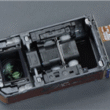Microsoft Enhances Windows 11 USB Type-C Connectivity: A New Era for User Experience
On August 30, Microsoft made headlines as technology media highlighted its efforts to improve the connectivity reliability and user experience within Windows 11. The tech giant is actively encouraging PC manufacturers (OEMs) to optimize the USB Type-C notification function, an essential feature aimed at streamlining device-user interactions.
Enhancing User Awareness
The newly implemented USB Type-C notification function is designed to alert users to connection issues. Whether it’s a slow charging incident, unsupported accessories, or abnormal connectivity, this feature aims to empower users by providing crucial information. However, the effectiveness of this function hinges significantly on the OEM’s ability to properly configure the relevant hardware and firmware.
Many devices are currently lacking this functionality due to insufficient configuration during manufacturing. For instance, Windows relies on the ACPI (Advanced Configuration and Power Interface) descriptor to identify the capabilities of the port. If this information is missing, the operating system cannot provide necessary prompts. Problems can also arise if the Type-C port is mislabeled as Type-A, or if it is incorrectly marked as "internal," resulting in further inaccurate notifications.
Microsoft’s Recommendations for Original Equipment Manufacturers
To mitigate these complications, Microsoft has urged OEMs to take proactive measures:
-
Review ACPI Descriptors: OEMs should scrutinize the ACPI descriptors for all USB ports to ensure accurate functionality recognition.
-
Verify Notification Behaviors: It is essential to test the notification behaviors across various configurations. This ensures users receive timely and accurate alerts.
- Adhere to Compatibility Testing: Ensuring compatibility with the Windows Hardware Compatibility Program (WHCP) is pivotal for manufacturers. Compliance guarantees that new platforms meet stringent testing requirements.
Additionally, OEMs are advised to document any deviations from standard behavior to facilitate future maintenance and upgrades.
Technical Implementation and Best Practices
For technical validation, Microsoft suggests utilizing the Windows Hardware Laboratory Suite (HLK) for compatibility checks. Proper implementation of critical descriptors like _UPC (USB Port Function) and _PLD (Device Physical Location) is vital. By conducting tests in a variety of scenarios and configurations, manufacturers can validate the stability and accuracy of these features prior to shipping.
Moreover, Microsoft has pointed out that some manufacturers might opt to disable data transfer features for USB Type-C in high-risk environments. In such cases, it is crucial that this policy is only enforced on external ports. This safeguards essential components such as trackpads and keyboards from unnecessary restrictions.
User Control for Enhanced Security
To fortify security and flexibility, Microsoft encourages OEMs to integrate user-controllable switches. This feature allows users to decide when to enable or disable data transmission, granting them greater control over their device’s functionality. Empowering users in this manner reflects Microsoft’s commitment to enhancing the overall user experience.
Conclusion
As Microsoft continues to advance the Windows 11 ecosystem, the emphasis on robust USB Type-C connectivity highlights the importance of collaboration between software and hardware manufacturers. By encouraging OEMs to adopt best practices and remain vigilant about compatibility, Microsoft is paving the way for smoother, more reliable user interactions. The integration of timely notifications not only enhances user experience but also underscores the importance of transparency in technology.
In conclusion, the progression towards improved USB Type-C functionality in Windows 11 is a significant step for both Microsoft and OEMs. It demonstrates a commitment to enhancing user awareness and control, laying the groundwork for more intuitive and reliable computing experiences in the future.









